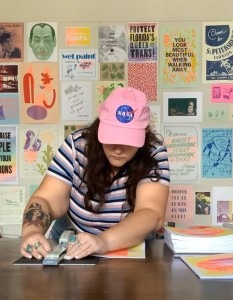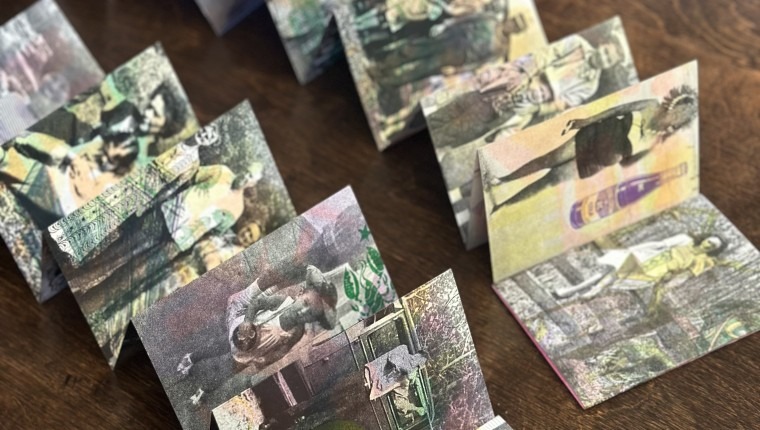Choosing to work in analog print mediums in 2024 doesn’t mean I’m a Luddite who opposes technology. In fact, much of my work is facilitated by the internet. Through online networks like Facebook groups and Listservs, I’m able to source equipment, parts, supplies, and out of print service manuals. I learned how to take apart a RISO ink drum to remove clogged ink thanks to the help of a repair forum. The internet has enabled a growing community of diy artists and publishers to share their knowledge, and trade resources and equipment. Additionally, social media platforms like Pinterest and Instagram are undoubtedly responsible for the growing awareness of Letterpress printing, and RISO’s grainy, imperfect print aesthetic, often emulated by digital illustrators and graphic designers.

Contextualized by a history rooted in activism, zines and tangible print media subvert the traditional hierarchical systems of mainstream publishing and the fine art world. Operating as Print St. Pete, my community print shop seeks to reclaim the collective power of print. Over the past decades, as technology advanced and infiltrated every aspect of our lives, many of us have gravitated towards the analog and handmade to counteract the screen void. The same way vinyl has seen a resurgence in spite of YouTube, Spotify and Apple Music, handmade, tangible print media like posters and zines remain popular not necessarily in spite of Instagram, TikTok and Pinterest, but in part because of it. Social media provides a platform for artists and creatives to share their work, allowing them to subvert the gatekeepers of the traditional, mainstream art and publishing worlds, and reach their audiences directly.

Tangible print allows for a more intimate and attentive engagement than scrolling on screens. Similarly, buying a handmade print or zine is almost like having a conversation with the creator, and less like purchasing a commodity. In this way, tangle print media creates and facilitates community, by connecting to others in a way that, despite increased access to information and connections, technology fails. My work for the Emerging Artists exhibition demonstrates the persisting power and relevance of printed, tactile ephemera, and the assembled multiple, in response to consumerism, mass-production, and the interface between human and machine. Included in the exhibition is time-lapse footage of my process: the countless hours I spent typesetting, proofing, printing, cutting, folding, binding, condensed into speedy clips where I appear almost machine-like.

In contrast to the capitalist machine, as an independent publisher and artist I work intentionally and consciously. As a creative I choose to work in mediums that remove me from behind a screen and return me to my own flesh. While today’s trending AI is all about productivity, slow printmaking and micro-publishing with obsolete technology directly opposes society’s fixation on toxic productivity and capitalist consumption by shifting print media from mass produced commodity to art object. I often recall the motto of ILSSA (Impractical Labor in Service of the Speculative Arts), who’s members are united by their valuation of the process: “As many hours as it takes.”






